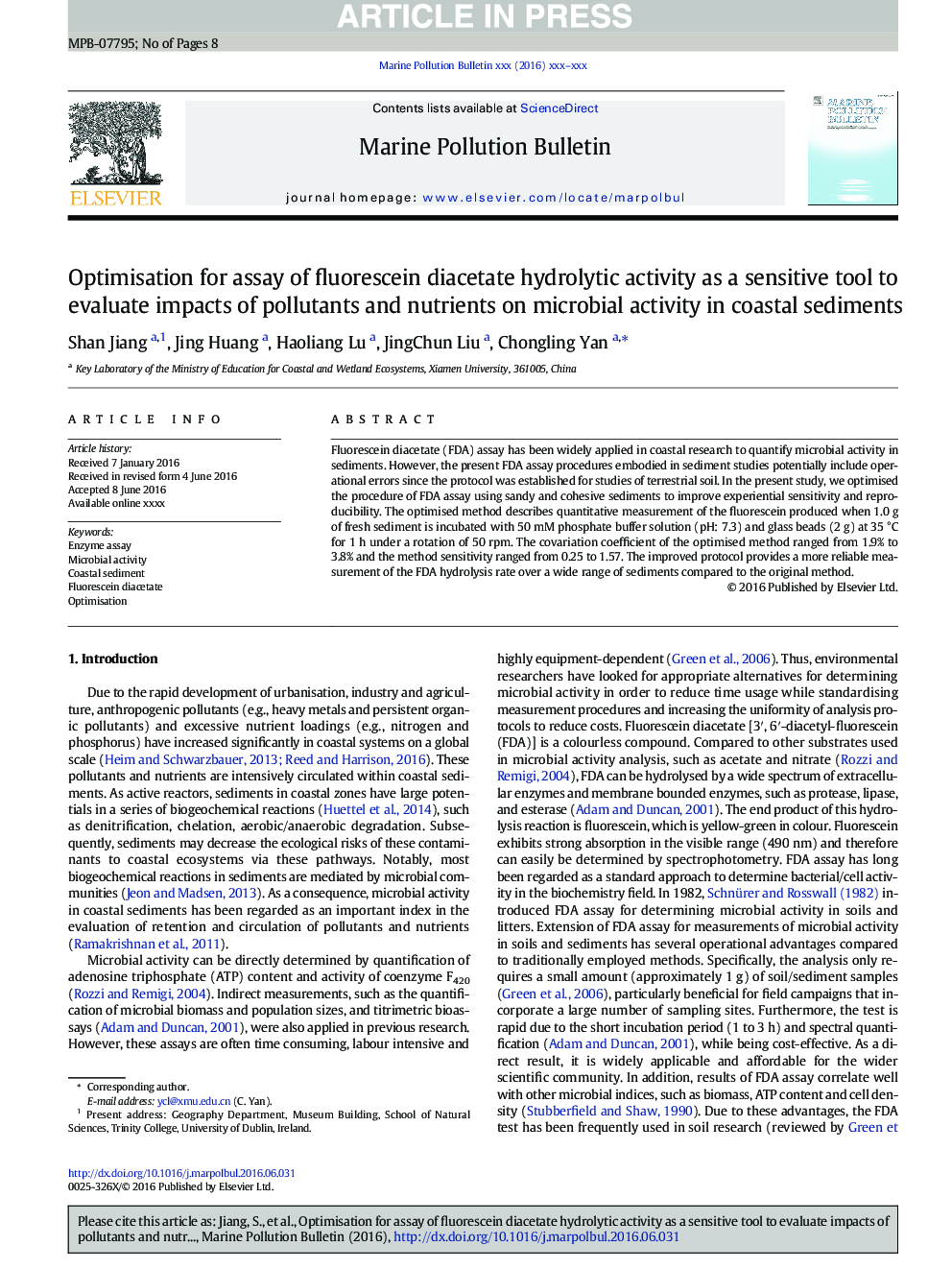| Article ID | Journal | Published Year | Pages | File Type |
|---|---|---|---|---|
| 6355714 | Marine Pollution Bulletin | 2016 | 8 Pages |
Abstract
Fluorescein diacetate (FDA) assay has been widely applied in coastal research to quantify microbial activity in sediments. However, the present FDA assay procedures embodied in sediment studies potentially include operational errors since the protocol was established for studies of terrestrial soil. In the present study, we optimised the procedure of FDA assay using sandy and cohesive sediments to improve experiential sensitivity and reproducibility. The optimised method describes quantitative measurement of the fluorescein produced when 1.0 g of fresh sediment is incubated with 50 mM phosphate buffer solution (pH: 7.3) and glass beads (2 g) at 35 °C for 1 h under a rotation of 50 rpm. The covariation coefficient of the optimised method ranged from 1.9% to 3.8% and the method sensitivity ranged from 0.25 to 1.57. The improved protocol provides a more reliable measurement of the FDA hydrolysis rate over a wide range of sediments compared to the original method.
Related Topics
Physical Sciences and Engineering
Earth and Planetary Sciences
Oceanography
Authors
Shan Jiang, Jing Huang, Haoliang Lu, JingChun Liu, Chongling Yan,
